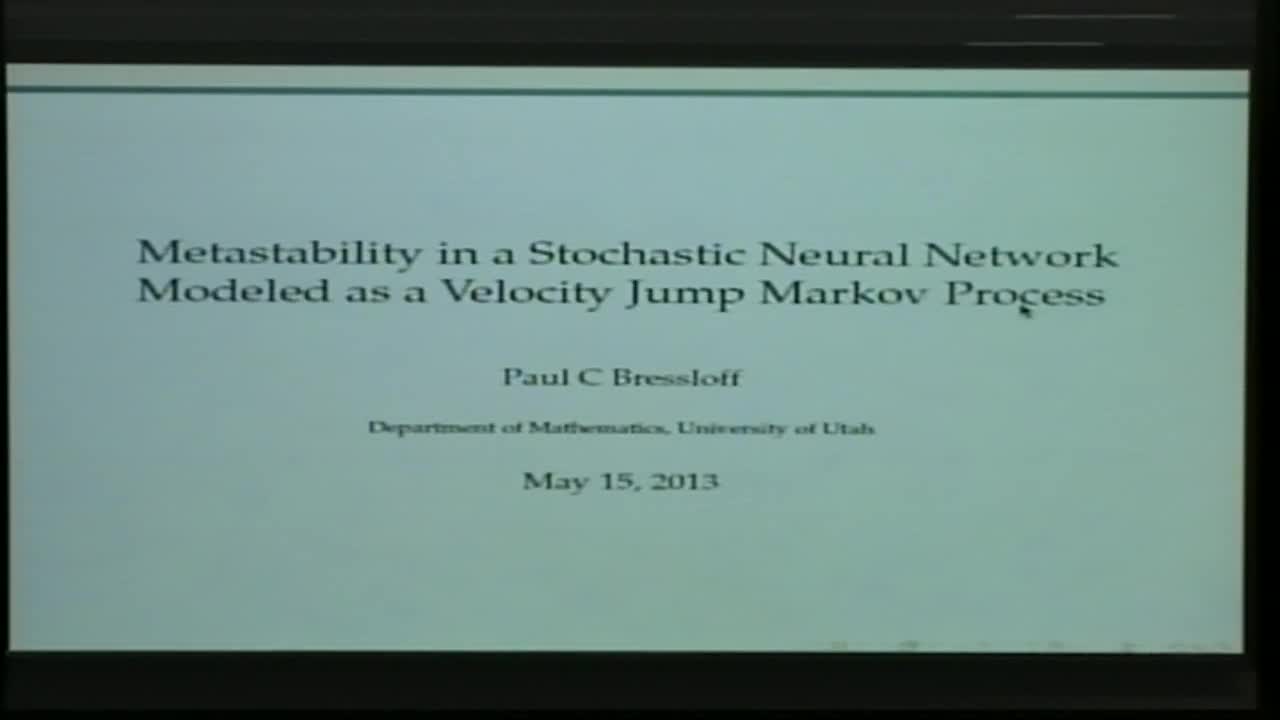Metastability in a Stochastic Neural Network Modeled as a Velocity Jump Markov Process
Presenter
May 15, 2013
Keywords:
- Markov processes, jump processes
MSC:
- 60J75
Abstract
One of the major challenges in neuroscience is to determine how noise that is present at the molecular and cellular levels affects dynamics and information processing at the macroscopic level of synaptically coupled neuronal populations. Often noise is incorporated into deterministic network models using extrinsic noise sources. An alternative approach is to assume that noise arises intrinsically as a collective population effect, which has led to a master equation formulation of stochastic neural networks. In this talk we show how to extend the master equation formulation by introducing a stochastic model of neural population dynamics in the form of a velocity jump Markov process. The latter has the advantage of keeping track of synaptic processing as well as spiking activity, and reduces to the neural master equation in a particular limit. The population synaptic variables evolve according to piecewise deterministic dynamics, which depends on population spiking activity. The latter is characterised by a set of discrete stochastic variables evolving according to a jump Markov process, with transition rates that depend on the synaptic variables. We consider the particular problem of rare transitions between metastable states of a network operating in a bistable regime in the deterministic limit. Assuming that the synaptic dynamics is much slower than the transitions between discrete spiking states, we use a WKB approximation and singular perturbation theory to determine the mean first passage time to cross the separatrix between the two metastable states. Such an analysis can also be applied to other velocity jump Markov processes, including stochastic voltage-gated ion channels and stochastic gene networks.
